 |
 |
 |
| |
Prevalence of HIV-1-Associated Neurocognitive Disorders in Argentina
|
| |
| |
Reported by Jules Levin
IAS Capetown July 2009
K Goodkin1,P Cahn2, M Concha3, L Abusamra2, E Lopez1, and J Kogan2
Cedars-Sinai Medical Center and UCLA, Los Angeles, USA1; Fundacion Huosped, Buenos Aires, Argentina2; University of Miami, Miami, USA3
Abstract.
Background: Primary Spanish speakers have been neglected in the research to date on the prevalence of the HIV-1-associated neurocognitive disorders (HAND) [minor cognitive-motor disorder (MCMD) and dementia (HAD)]. Argentina is a moderate-resource country with general access to HAART regimens. There is no routine screening for HAND in Argentina.
Methods: We have translated the NIMH consensus battery for evaluating neurocognitive impairment in HIV infection into Spanish (the "HUMANS" battery) for a study in the USA. Subsequently, this translation was modified for Argentinean Spanish. After an intensive training program was provided to Argentinean study staff on the use of this battery, the prevalence of HAND in a series of randomly selected participants was determined at the HIV primary care clinic of Fundacion Huosped (FH) in Buenos Aires.
Results: From a sample of 92, ten participants did not complete assessment. Of the remaining total of 82, there was concordance between the Argentinean and American teams on 69 cases (84.1%) of cases, confirming the achievement a high rate of agreement between teams on the diagnosis of HAND. Consensus on the remaining 13 cases was reached in joint team meetings. The HAND diagnoses rates obtained in this sample were: 39 (47.6%) evaluated as "not having a neurocognitive disorder", 21 (25.6%) as having MCMD, and 22 (26.8%) as having HAD.
Conclusions: The prevalence rate of HAND, overall, was 52.4%, a high rate. The prevalence of HAD was much higher than that currently reported for HIV infected persons in the USA; in contrast, the prevalence of MCMD in Argentina was only slightly higher than that reported in the USA. These results could be related to the use of a solely clinic-based sample in Argentina rather than mixed clinic and community-based samples accrued in the USA. Other explanations include differences in antiretroviral adherence, neurovirulence of viral sub-types circulating in Argentina and the USA, and in CNS-penetration of antiretroviral regimens used. Further research on the differential prevalence of HAND across cultures of primary Spanish speakers internationally is warranted.
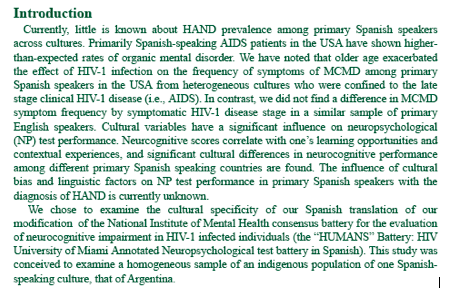
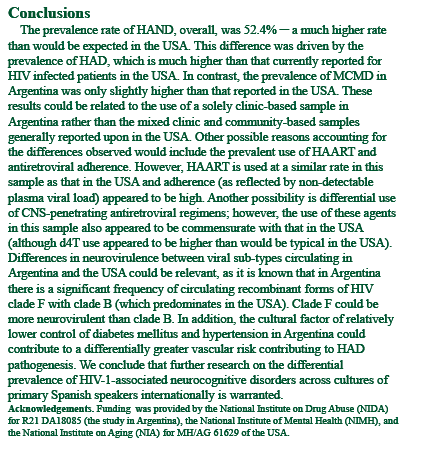
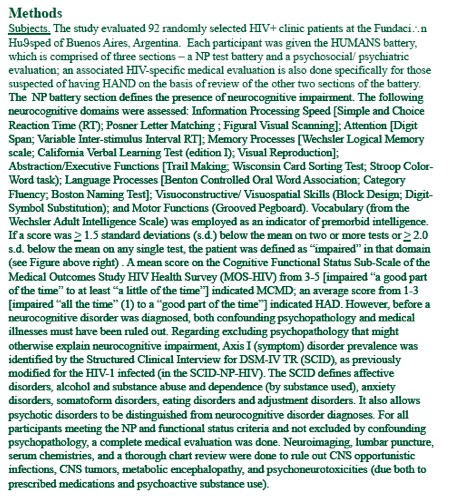
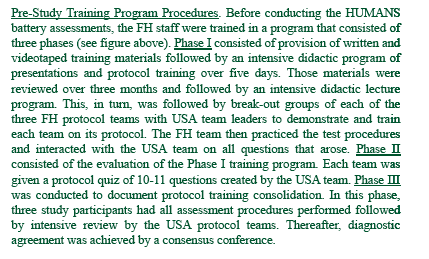
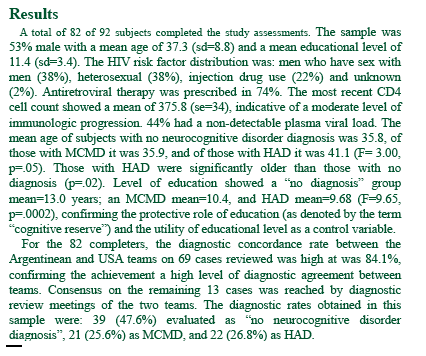
|
| |
|
 |
 |
|
|